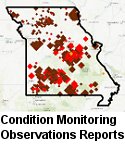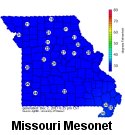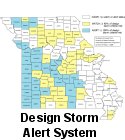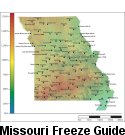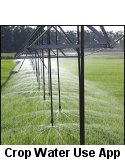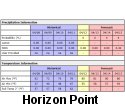
Missourians urged to report drought conditions
Story by: Linda Geist
July 21, 2017
COLUMBIA, Mo. - University of Missouri Extension climatologist Pat Guinan urges Missourians to report the impact of drought in their areas to the Drought Impact Reporter (DIR) at droughtreporter.unl.edu.
The National Drought Mitigation Center, drought.unl.edu, works to inform the public about drought planning, mitigation and response, he says. It also helps decision-makers identify and reduce vulnerability to drought.
Input from citizens statewide helps decision-makers gain a more complete and accurate portrayal of the location and severity of drought in each state and region. "Nobody knows a drought better than the person living in it," Guinan says.
Examples of drought impact include crop and forage damage; livestock stress; low water in streams, ponds, lakes or public water supplies; and burn bans or water restrictions set by public officials.
The Drought Monitor map at droughtmonitor.unl.edu is based on measurements of climatic, hydrologic and soil conditions as well as reported impacts and observations from hundreds of contributors across the country, including people who participate in the Drought Impact Reporter. A dozen individuals from partner organizations take turns serving as the lead author for the Drought Monitor map each week.
"We, including me, do not determine drought categories for Missouri," Guinan says. "But we all can provide suggestions, recommendations and impact information on what is happening in our state to the Drought Monitor authors." Authors review reported data and use their best judgment to create the drought map.
The DIR online tool makes it easy for private citizens to report conditions, says Guinan. The drought reports are available to the public and are archived for future use. Reports and impacts are mapped separately.
"In order to contribute impact reports, and provide local expertise to a Drought Monitor author, I highly encourage Missourians to use the Drought Impact Reporter tool," Guinan says.
To submit a DIR report, go to droughtreporter.unl.edu and click on the "Submit a Report" tab at the top of the page.
The National Drought Mitigation Center at the University of Nebraska-Lincoln, the U.S. Department of Agriculture and the National Oceanic and Atmospheric Administration (NOAA) produce the Drought Monitor map. Established in 1999, the Drought Monitor provides a weekly update of drought conditions every Thursday morning. NOAA and USDA's Risk Management Agency fund the DIR.
Source: Pat Guinan, 573-882-5908


